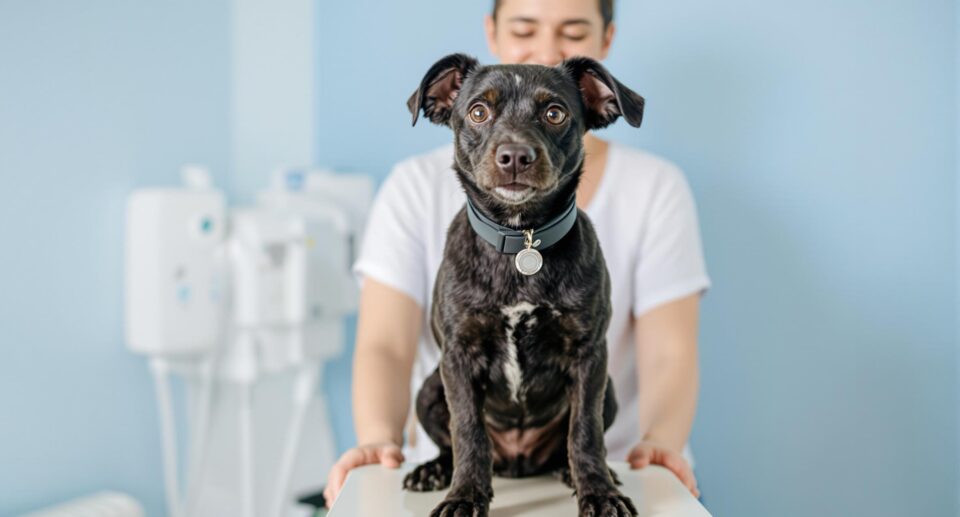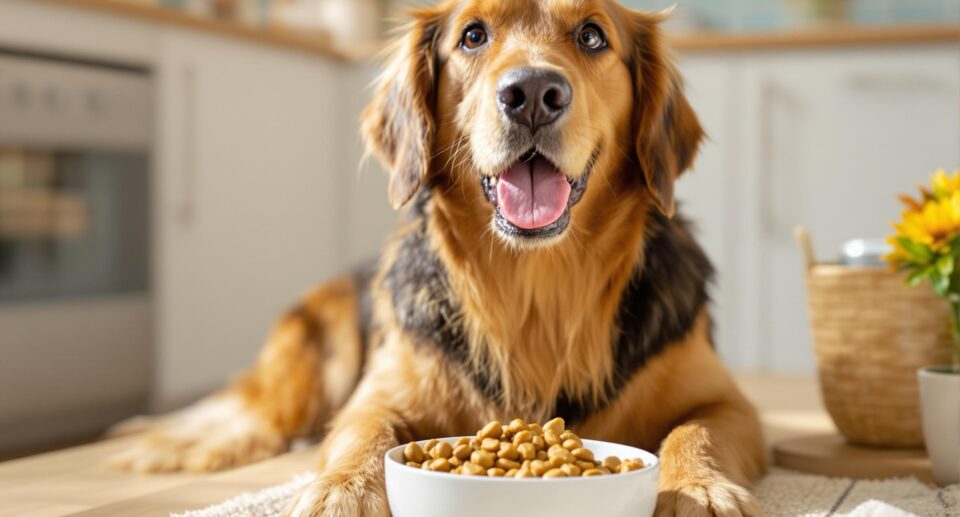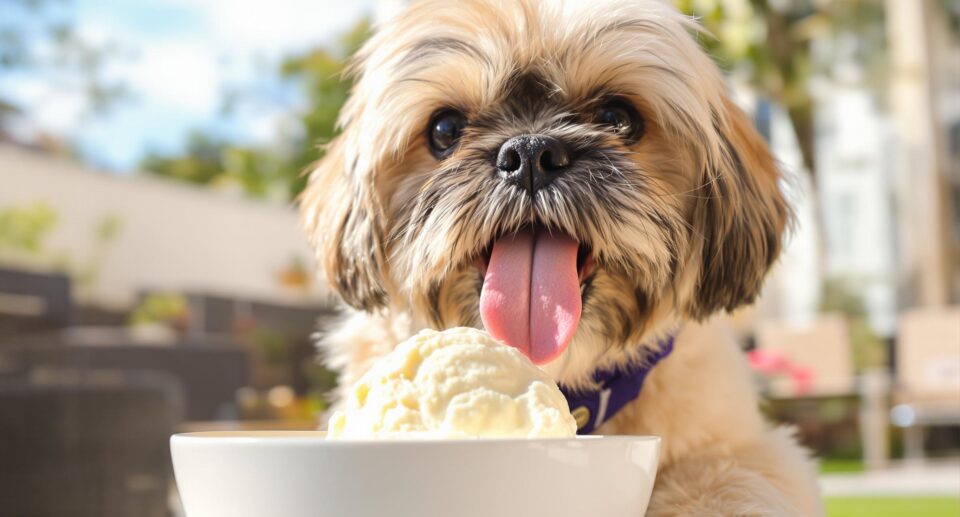How Much To Feed Your Dog To Lose Weight: 5 Foolproof Steps

Over half of all adult dogs in the United States are overweight or obese, so if you struggle with your dog’s weight, you’re not alone. If you’re like many pet parents, you might depend on the weight chart on the side of the bag of food to decide how many scoops to feed, or you might just fill your dog’s bowl whenever they seem hungry. In recognition of Canine Fitness Month, here are five easy steps to calculate how much to feed your dog to lose weight – even if you hate math.
1. Weigh your dog more often.
It can be tricky to weigh your dog at home. If your dog is only weighed yearly at their annual vet exam, you may be surprised when you see the numbers on the scale. To start off your dog’s weight loss journey, get equipped to weigh your pup every 1-2 weeks. For dogs under 25 pounds, a postal scale can do the trick. For bigger dogs, you can use a human scale. You can either teach your dog to sit on it while you read their weight, or you can weigh them by holding them while you stand on the scale, then subtracting your own weight from the total.
2. Learn your dog’s body condition score.
Dogs can have a body condition score from 1 to 9, from underweight to obese. If they’re at about a 5, at their ideal weight, they will have an hourglass shape when viewed from above. You should be able to see their waist. For dogs with long hair, though, you may need to use your hands to feel their body condition through their coat. You should be able to feel a slight covering of fat over their ribs, spine, and hips.
Keep in mind that breeds can look different at a healthy weight. Stocky breeds like the English Labrador may not have an obvious waist, even if they’re not actually overweight, while a Greyhound may be overweight but still have a waist. Your veterinarian assesses dozens of dogs each week and will be able to help you determine your dog’s body condition score.
3. Count those calories.
To determine the best serving size for your dog, you’ll need to calculate how many calories they should eat at each meal.
First, you’ll need to feed your dog based on their ideal weight, not their current weight. Convert their ideal weight from pounds to kilograms by dividing by 2.2.
Then, you’re going to calculate their weight in kilograms to the power of 0.75. Multiply that number by 70, and you’ll have your dog’s resting energy requirement (RER) or the minimum number of calories to feed your dog to lose weight.
[(Ideal weight in pounds/2.2)^.75]*70= RER
With this equation, a dog with an ideal weight of 50 pounds needs about 728 calories each day to lose weight. If they eat Purina Pro Plan Adult Weight Management Chicken & Rice, which has 364 calories per cup, they should have two cups of food per day.
If your dog is already at their ideal weight and just needs to maintain it, you can multiply their RER by 1.6 (if they’re spayed or neutered) or 1.8 (if they’re intact) to determine their daily maintenance calories.
So if a dog is 50 pounds and already at an ideal weight, they can maintain it at up to 1165 calories per day.
4. …But don’t stress the math.
While the daily calorie equation can set you in the right direction, it’s still not accurate for all dogs. Small dogs need more calories in proportion to larger dogs because they have a faster metabolism. Active dogs burn more calories than couch potatoes. There’s no way to determine the exact number of calories your dog will burn each day, nor exactly how the body utilizes them. The best we can do is get pretty close, and that should be enough to result in healthy, gradual weight loss.
If you’re measuring your dog’s portions at each meal, and doing your best to estimate their caloric needs, but you’re still not making progress with their weight, talk to your veterinarian. Certain conditions like Cushing’s disease or hypothyroidism can cause weight gain if undiagnosed.
5. Feed a nutrient-dense diet.
Cutting back on your dog’s portions of their regular food can put them at risk for nutritional deficiencies. Food that’s lower in calories can help your dog lose weight while providing complete, balanced nutrition. Consider ditching the kibble, or at least supplementing it with fresh food options like dehydrated, freeze-dried raw, or fresh cooked food and treats. Fresher options are usually higher in protein, helping your dog feel full, and they’re higher in moisture and volume, so they take up more room in their stomach.
Honest Kitchen dehydrated foods are great for dogs who have trouble maintaining a healthy weight. Their Verve Whole Grain Beef recipe is low in fat and high in lean protein, so it can help your pup maintain a lean, muscular physique.
How To Tell If Your Dog Is Losing Enough Weight
When monitoring your dog’s weight loss, aim for steady, lasting results. Dogs should lose no more than 1-2% of their body weight per week. Any more, and you may put your dog’s health at risk. If it’s been a few months and your dog is still not losing weight, don’t give up – schedule a checkup with your veterinarian.





